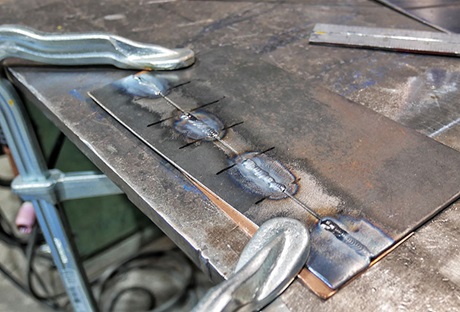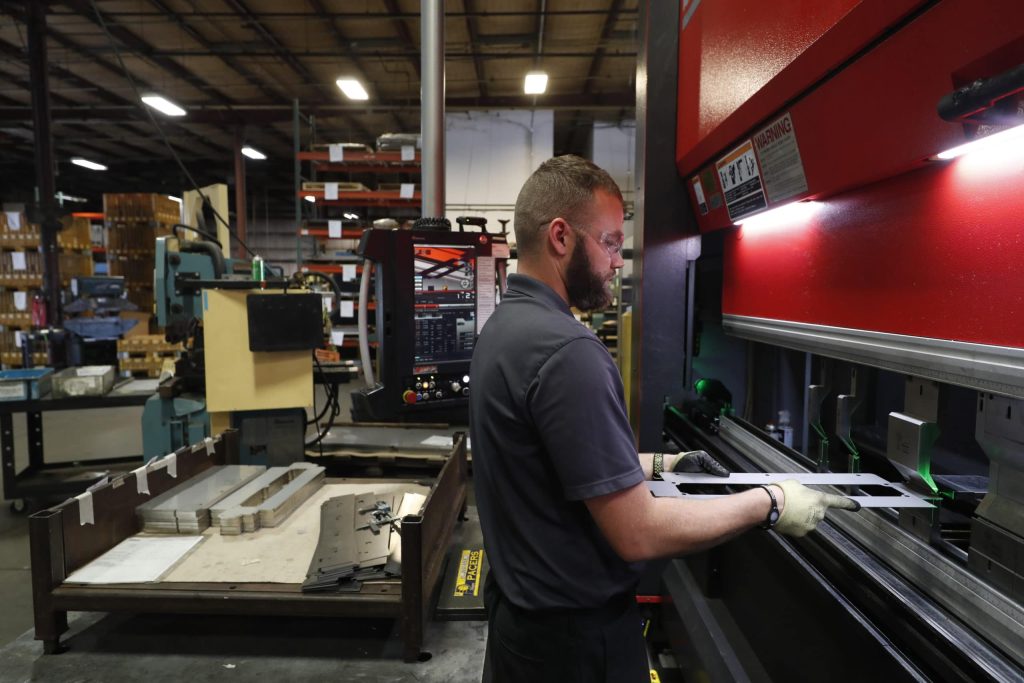Table of Contents
Welding sheet metal can be a daunting task for beginners, but with the right knowledge and skills, it can be a rewarding experience. Sheet metal is a thin, flat piece of metal that is commonly used in various industries and applications. It is important to understand the techniques and precautions involved in welding sheet metal to ensure a successful outcome.
One of the challenges of welding sheet metal is its thickness. Sheet metal is typically less than 1/8 inch thick, which makes it more susceptible to warping and distortion during the welding process. However, with proper preparation, the right welding technique, and the right equipment, welding sheet metal can be accomplished with precision and ease.
Can You Weld Sheet Metal?
Sheet metal is a thin and flat metal that is widely used in manufacturing and construction industries. It is a versatile material that is easy to work with, but welding it can be challenging. If you are wondering whether you can weld sheet metal, the answer is yes, but there are some considerations you need to keep in mind. In this article, we will discuss everything you need to know about welding sheet metal.
Basics of Welding Sheet Metal
Welding sheet metal requires a different approach than welding thicker metals. The most common welding methods for sheet metal are MIG and TIG welding. MIG welding is a fast and easy process that uses a wire feed to join the metal pieces. TIG welding is a slower process that uses a tungsten electrode to create a precise and clean weld. Both methods require a low heat input to avoid warping or burning through the thin metal.
Welding sheet metal also requires proper preparation, such as cleaning the surfaces to be welded and using the correct filler material. You should also consider the thickness of the metal, as thinner metals require lower amperage settings and thinner filler wires.
Benefits of Welding Sheet Metal
Welding sheet metal offers several benefits. It allows you to create strong and durable joints between metal pieces, which is essential in manufacturing and construction industries. Welding also provides a clean and seamless finish that is aesthetically pleasing. Additionally, welding sheet metal is a cost-effective solution that can save you time and money compared to other joining methods.
Challenges of Welding Sheet Metal
Welding sheet metal also presents some challenges. The thinness of the metal makes it susceptible to warping and burn-through, which can compromise the structural integrity of the joint. Welding also requires a high level of skill and experience to achieve a proper weld. If you are not confident in your welding abilities, it is best to seek the help of a professional.
Welding vs. Other Joining Methods
When it comes to joining sheet metal, welding is not the only option. Other joining methods include riveting, bolting, and adhesive bonding. Each method has its advantages and disadvantages. Riveting and bolting are quick and easy solutions that do not require heat, but they leave visible joints that may be less aesthetically pleasing. Adhesive bonding provides a clean and seamless finish, but it may not be as strong and durable as welding.
Conclusion
In conclusion, welding sheet metal is a feasible option that offers several benefits, but it requires proper preparation, equipment, and skill to achieve a proper weld. If you are new to welding, it is best to start with thicker metals and practice before moving on to sheet metal. Remember to consider the thickness of the metal, the welding method, and the filler material to ensure a strong and durable joint. With the right approach, you can weld sheet metal like a pro.
| Pros | Cons |
|---|---|
| Creates strong and durable joints | Thin metal is susceptible to warping and burn-through |
| Cost-effective solution | Requires high level of skill and experience |
| Clean and seamless finish | Not the only joining method available |
- MIG welding is a fast and easy process that uses a wire feed to join metal pieces.
- TIG welding is a slower process that uses a tungsten electrode to create a precise and clean weld.
- Proper preparation is important, such as cleaning the surfaces to be welded and using the correct filler material.
- Welding sheet metal requires a low heat input to avoid warping or burning through the thin metal.
- Other joining methods include riveting, bolting, and adhesive bonding.
Frequently Asked Questions
Can You Weld Sheet Metal?
Yes, you can weld sheet metal. However, it requires a bit of skill and knowledge to do it properly. Sheet metal is a thin metal that can easily warp or distort if it is heated too much. As a result, you need to be careful when welding sheet metal.
The best way to weld sheet metal is to use a MIG welder with a lower heat setting. This will ensure that the metal does not get too hot and warp. You should also use a wire that is thinner than the metal you are welding. This will allow you to create a strong weld without burning through the metal. In addition, you should use a welding technique called tack welding. This involves welding small sections of the metal together instead of welding the entire piece at once.
What Type of Welder Do You Need to Weld Sheet Metal?
The best type of welder to use for sheet metal is a MIG welder. MIG welding is a process that uses a wire to create a weld. The wire is fed through a welding gun and is melted by an electric arc. The melted wire is then used to join two pieces of metal together.
MIG welding is ideal for sheet metal because it allows you to control the heat and the amount of wire that is melted. This means that you can create a strong weld without overheating the metal. In addition, MIG welding is easy to learn and can be used on a variety of metals.
What Are the Common Mistakes When Welding Sheet Metal?
There are several common mistakes that people make when welding sheet metal. The first mistake is using too much heat. Sheet metal is very thin and can easily warp or distort if it is heated too much. As a result, you need to be careful when welding sheet metal.
The second mistake is not using the right type of wire. When welding sheet metal, you should use a wire that is thinner than the metal you are welding. This will allow you to create a strong weld without burning through the metal. The third mistake is not using the right welding technique. Tack welding is the best technique to use when welding sheet metal. This involves welding small sections of the metal together instead of welding the entire piece at once.
What Are the Safety Precautions When Welding Sheet Metal?
Welding sheet metal can be dangerous if you do not take the proper safety precautions. The first precaution you should take is wearing protective clothing. This includes a welding helmet, gloves, and a jacket. The helmet will protect your eyes from the bright light of the welding arc. The gloves and jacket will protect your skin from the heat and sparks.
The second precaution you should take is making sure that your work area is well-ventilated. Welding produces fumes that can be harmful if they are inhaled. You should make sure that you are working in a well-ventilated area or use a welding fume extractor.
What Are the Applications of Welding Sheet Metal?
Welding sheet metal has a variety of applications. One of the most common applications is in the automotive industry. Sheet metal is used to create car bodies and parts. Welding is used to join the sheet metal together to create a strong and durable car.
Sheet metal is also used in construction. It is used to create roofs, walls, and other parts of buildings. Welding is used to join the sheet metal together to create a strong and durable structure. Finally, sheet metal is used in the manufacturing industry to create a variety of products. Welding is used to join the sheet metal together to create a strong and durable product.
In conclusion, welding sheet metal is not an impossible task. With the right tools, techniques, and practice, anyone can weld sheet metal like a pro. However, it is important to note that sheet metal is a delicate material that requires a delicate touch. Mishandling sheet metal during welding can lead to warping, distortion, and other defects that can affect the quality and durability of the final product.
Therefore, before attempting to weld sheet metal, it is important to do your research, acquire the right tools, and practice on scrap pieces before moving on to actual projects. It is also recommended to seek the guidance of an experienced welder or take welding classes to ensure that you are using the proper techniques and safety measures.
In conclusion, welding sheet metal may seem daunting at first, but with the right approach and practice, it is definitely possible to master. So, if you have the ambition to take on this challenge, don’t be afraid to give it a try!
Request a quote today!
[contact-form-7 id="1578" title="Contact form"]
Please compress the file into a ZIP or RAR file before uploading. Alternatively, send through your RFQ by email.
enquires@unitymanufacture.com




